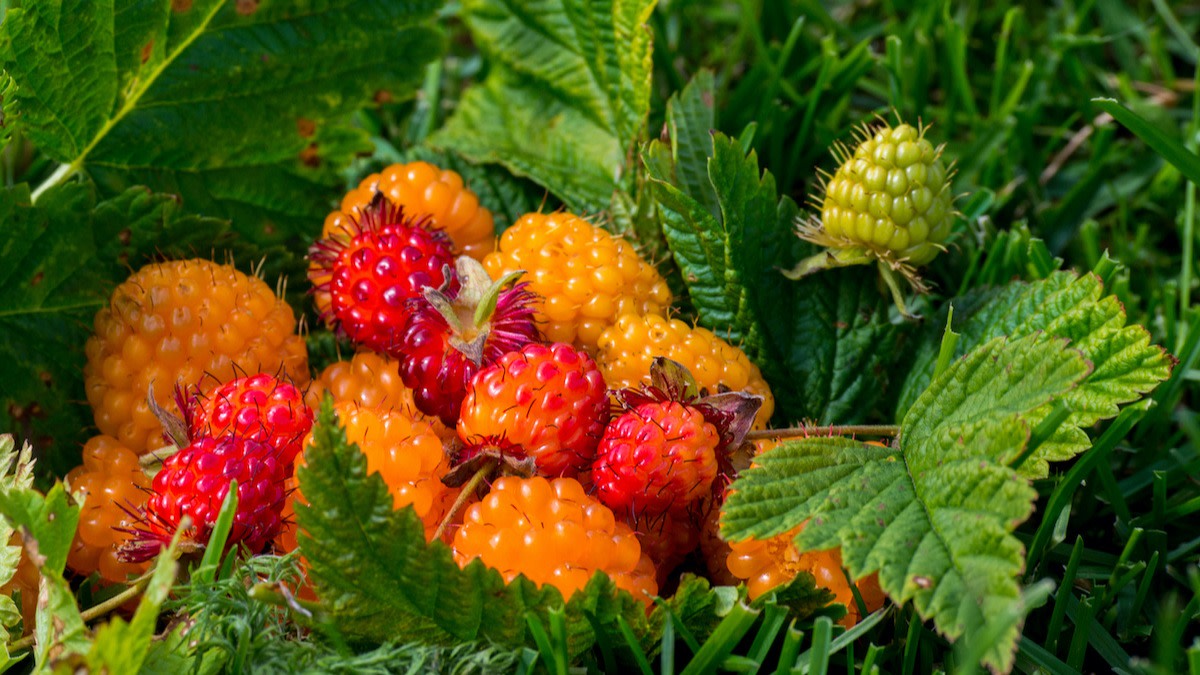Guide to Salmonberries: How to Forage Salmonberries
Written by MasterClass
Last updated: Apr 21, 2022 • 2 min read
Salmonberries are wild, edible berries that grow near the West Coast of North America. These tasty and vibrant fruits can provide nutrition and sustenance in the wild.
Learn From the Best
What Are Salmonberries?
Salmonberries are the fruit of the Rubus spectabilis plant, a rhizomatous, deciduous shrub in the Rosaceae or rose family. Salmonberry canes can form dense thickets, or brambles, in forests and on streambanks. Salmonberries are an important food source for pollinators, particularly Rufous hummingbirds.
Salmonberries resemble raspberries in color and shape, but salmonberries are a lighter, pinkish shade of red and sometimes yellow-orange. Salmonberries are aggregate fruits made of smaller drupelets. Salmonberries likely get their name from Indigenous peoples on the Pacific Northwest coast, who ate these fruits with salmon.
Can You Eat Salmonberries?
Salmonberries are safe for human consumption. One of the earliest to ripen in spring, these fruits have been prized for generations by Indigenous peoples living in Alaska, along the western slopes of the Cascade Mountains through British Columbia, Oregon, and California. Salmonberries are too soft to dry, so these native plants are usually eaten fresh, preserved in jams and jellies, or fermented into country wines.
Salmonberries vs. Thimbleberries: What’s the Difference?
Salmonberries and thimbleberries are similar in appearance, but there are a few key differences:
- Location: Salmonberries and thimbleberries have overlapping distribution ranges in North America, from the Pacific Northwest to Idaho. Thimbleberries, however, grow as far east as Michigan.
- Color: Salmonberries range in color from yellow to red. The trifoliate leaves of the plants are shiny on top and serrated, and the flowers, which begin to bloom in early spring, are a light purple-pink color. Thimbleberries are a brighter red color, and the plant leaves are softer, fuzzier, and less shiny. The stems produce white flowers.
- Shape: Salmonberries are oblong, closely resembling raspberries. Thimbleberries are rounder and flatter than salmonberries.
How to Forage Salmonberries
When foraging in the wild, only pick as many salmonberries as you can reasonably consume or transport home. Salmonberries are very fragile, and packing them tightly into a bag or container can cause damage. New growth of the plant, in the form of shoots, is also edible, but it is best to steam mature sprouts before eating.
How to Grow Salmonberries
You can cultivate salmonberries if you live in USDA hardiness zones four through nine. For home propagation, start with hardwood cuttings from a salmonberry bush or purchase a plant from a garden center. The shrubs grow best in full to partial shade in moist, nitrogen-rich soil. Salmonberry plants are useful in re-establishing degraded ecosystems, making them a critical species to their native ecology.
How to Eat Salmonberries
Salmonberries can range in flavor, depending on the variety, ripeness, and soil condition. Once salmonberries are ripe, you can pick the fruit and consume it fresh, or collect the fruit for preservation. You can make jam, jelly, preserves, and country wine from the fruits.
Ready to Explore More of the Great Outdoors?
Prepare for any outdoor journey by grabbing a MasterClass Annual Membership and committing Jessie Krebs’s wilderness survival course to memory. As a former United States Air Force Survival, Evasion, Resistance, and Escape instructor, Jessie can teach you everything you need to know about packing for a trip (neon is the new black), purifying water, foraging (crickets: the other white meat), starting a fire, and signaling for help (forget SOS).
